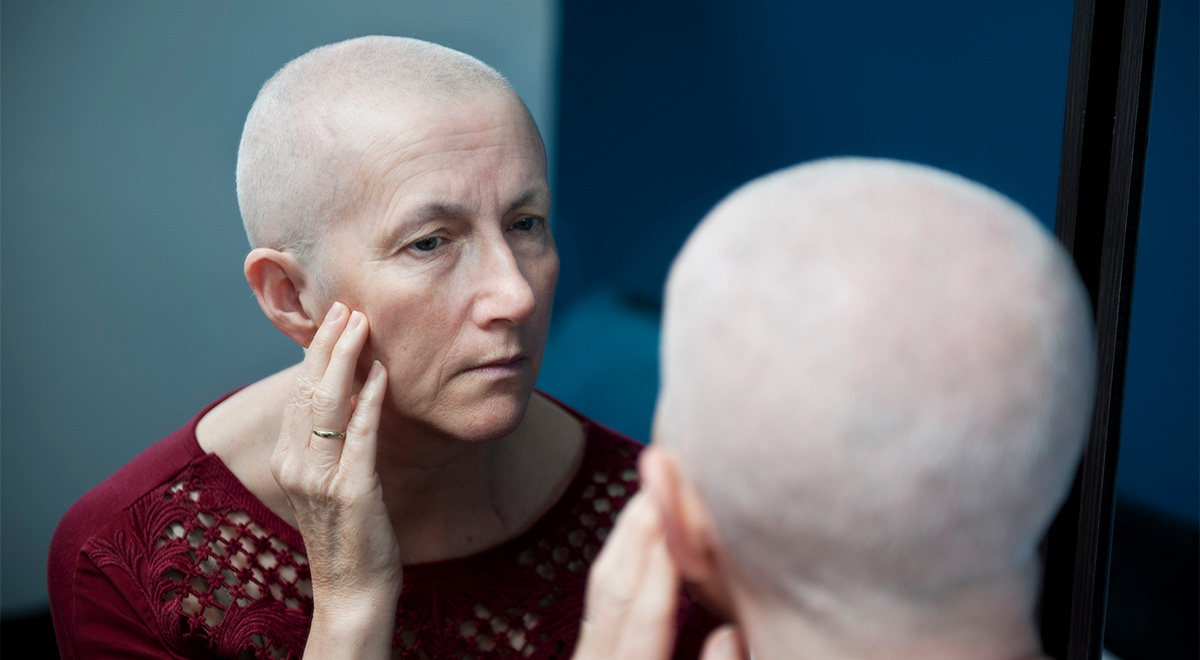One of the emotionally devastating side effects of cancer chemotherapy is hair loss or alopecia. A device that was approved in 2007 for the treatment of a condition known as neonatal encephalopathy, which puts newborn infants at risk for brain damage, can help prevent this side effect. However, most insurers refuse to cover the costs, which limits its availability to cancer patients able to meet the out-of-pocket costs.
The device is known as a hypothermia cap, or a “cool cap.” Since receiving FDA approval, the device has been used on infants who have suffered oxygen deprivation during birth (neonatal asphyxia, a major risk factor for cerebral palsy). It is a tight-fitting cap, generally made from neoprene or similar material, worn over the scalp. The device is filled with a coolant and either frozen or cooled to sub-zero temperatures with the use of an external controller, such as a refrigeration unit. When worn, it causes blood vessels in the scalp to constrict. With infants at risk of brain damage due to neonatal asphyxia, it slows down metabolic activity in the brain, reducing the infant’s need for oxygen. With cancer patients, this constriction of the blood vessels reduces the amount of chemotherapy medication in the scalp, reducing exposure to hair follicles. The low temperatures also slow down the activity of hair follicles themselves, inhibiting mitosis (cell division), thus preventing hair loss.
The problem is that a single treatment with a hypothermia cap can cost between $1500 and $3000.
Although oncologists at the Dana-Farber Cancer Institute and Massachusetts General Hospital have stated that hypothermia caps are effective in preventing hair loss for patients undergoing certain types of chemotherapy, insurers are refusing to cover the treatments. According to a recent story in the Boston Globe, at least one insurer, Blue Cross Blue Shield of Massachusetts, claims that it “hasn’t been shown to be widely effective” – despite doctors’ statements and clinical studies to the contrary. In fact, a study published in the Journal of the American Medical Association in February 2017 found that half of the patients with Stage 1 or 2 breast cancer were able to keep 50 percent of their hair by using hypothermia caps – while those who did not use the caps suffered total hair loss.
Because of insurers’ refusal to cover hypothermia caps, out-of-pocket costs for a patient can be $2000 or more. This puts hypothermia caps out of reach for low-income patients and hospitals with limited resources. Breast cancer specialist Dr. Steven Isakoff told the Globe, “It is beyond me why insurers wouldn’t pay for this when they are willing to pay for a wig.”
Hypothermia cap treatments do involve a measure of discomfort. Patients report suffering cold-stimulus headaches (popularly known as “brain freeze”), dizziness and nausea. It also lengthens the time required to undergo a session of chemotherapy. However, most patients are willing to endure the side effects in order to prevent total hair loss.
While insurance companies are still reluctant to pay for hypothermia cap treatments, two manufacturers – Paxman and Dignitana – are working with a San Francisco-based foundation called Hair to Stay in order to make the caps available for low-income patients by providing subsidies. Patients are also donating their caps back to the hospitals for others who come after them.

